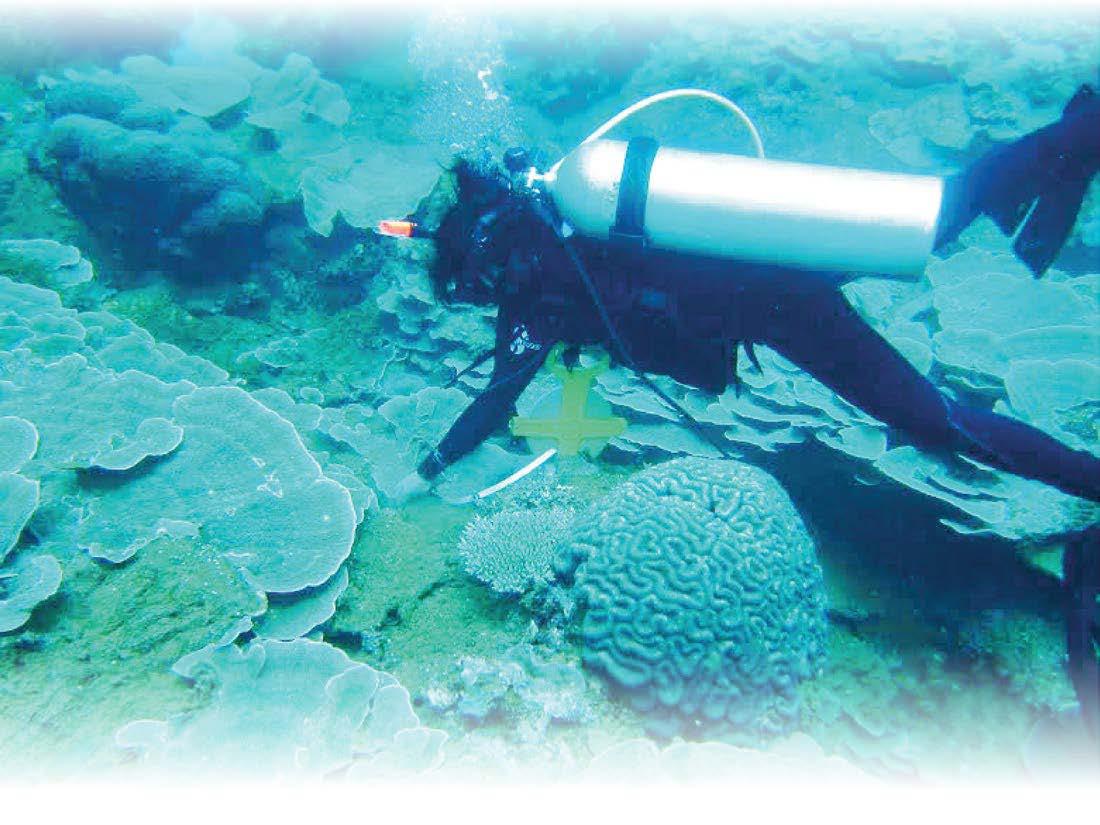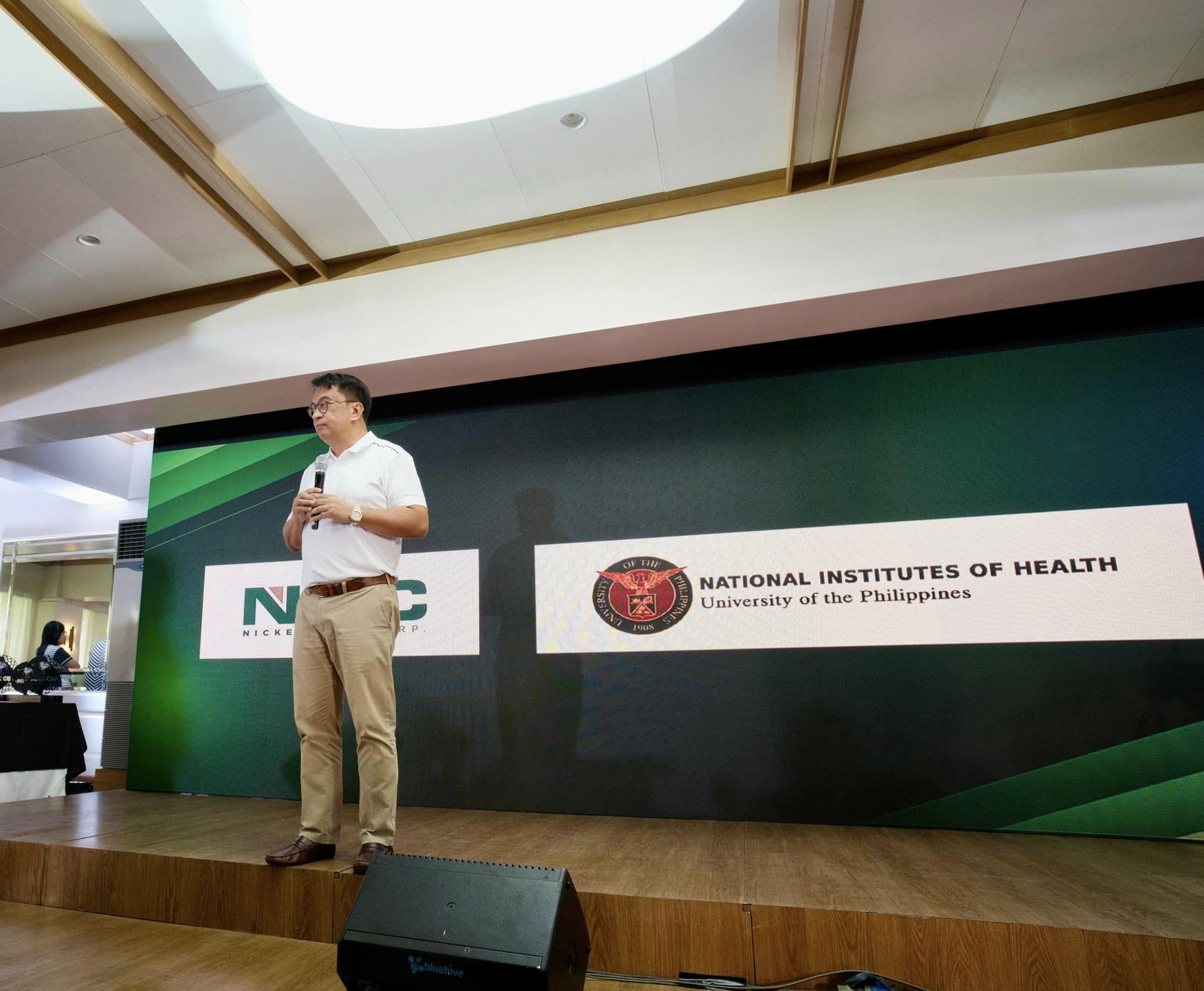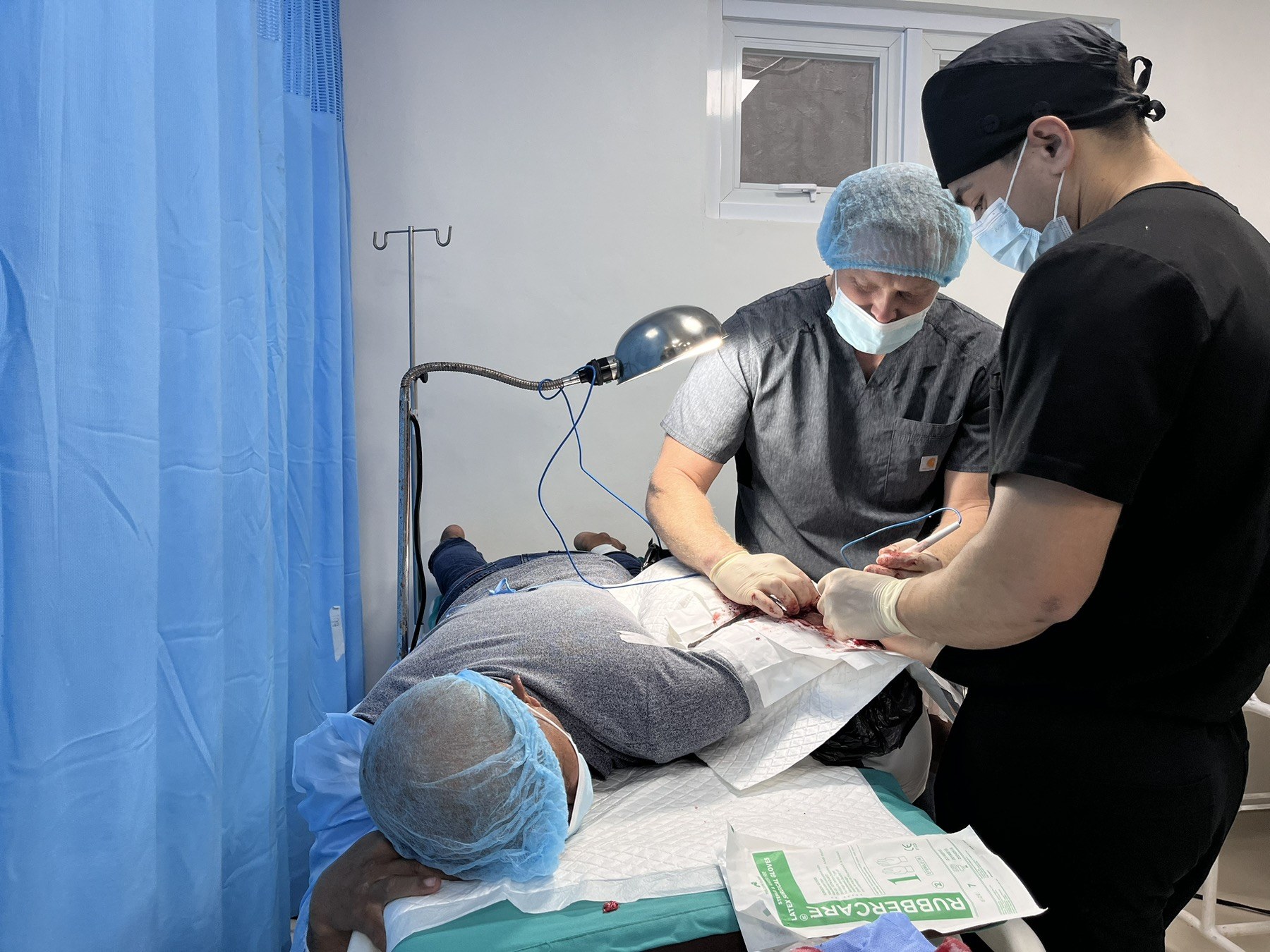Turbidity in water bodies remains one of the most visible impact of strip mining, especially for nickel mines operating near coastal areas.

Turbidity in water bodies remains one of the most visible impact of strip mining, especially for nickel mines operating near coastal areas.
This has generated negative perceptions for nickel miners in general, including those that religiously comply with environmental laws.
Inspite of this, Cagdianao Mining Corporation (CMC), an affiliate of Nickel Asia Corporation (NAC) is unflinching in its commitment to environmental protection, as evident in its productive partnership with local officials in the conservation of a Marine Protected Area (MPA) located in its host community in Barangay Valencia, Cagdianao.
Gaas Bay is a sprawling 80-hectare conservation area that is home to different species of fish, corals, mangroves and other marine life.
Declared as a marine sanctuary by the local government unit (LGU), Gaas Bay--located some three kilometers from the CMC mine site--has been proof of the company's long-term effort to preserve and maintain a healthy, balanced marine ecosystem within its mining footprint.
The LGU-CMC partnership began many years ago when the company agreed to shoulder the monthly incentives of some 50 sanctuary guards or "bantay-dagat", who report in shifts from an observation station built by CMC.
CMC also provides the "bantay- dagat" with necessary equipment, logistical support and other provisions to be effective in their assigned tasks, which include patrolling the protected area to fend off illegal fishing.
As a result, compressor fishing or locally-known as "boso" has been practically eliminated, as well as other destructive fishing methods within the sanctuary.
Equally important is the company's contribution in conducting regular monitoring and assessment to evaluate the status of the marine life in Gaas Bay, whose large portion includes a cove.
During the marine ecosystem assessment in the second quarter of 2016, more than 130 fish were observed covering 21 different species under 19 different families.
The highest total average of fish species found during the assessment were under the family of Pomecentridae, commonly known as Damselfishes (locally known as Payata) and under labridae family, commonly known as Flutermouths (locally known as Tubo-tubo).
It is a legacy that is contributing to the preservation of the ocean, yet ongoing mining operation is observed.
CMC Marine Biologist Ezequio Hataas, Jr. said that the team had observed stingrays, baby blacktip sharks, migratory turtles and even dolphins.
"The presence of these predators indicate a healthy ecology. The corals are also impressive, as well as fish diversity. Over-all, we're impressed with our assessment for it shows that the company's conservation efforts have paid off," Hataas said.
Aside from regular monitoring, the marine biologist also said the company is conducting quarterly coastal clean-up as part of its effort to raise awareness on the importance of marine protection and conservation.
Hataas said among the company’s plans include assessing fish catch of local fishermen, sediment analysis and other integrated analyses to further improve marine conservation practices.
"Gaas Bay has a rich marine ecosystem and it is teeming with life that include three species of mangroves, abundant corals, seaweeds and seagrass, rich variety of fish species and other marine life. We need to protect it not only for in the short-term, but especally in anticipation that when the mine site has already closed, locals will have something to turn to as an alternative sources of livelihood," Hataas said.
As significant as 15 years of partnership with the local government units, CMC has played an essential role in supporting the conservation of this MPA.
CMC’s Environmental department spearheads in monitoring its current status especially the coral reef and fish community inside the MPA.
Under the Environmental Protection Enhancement Program (EPEP), assessment is done on a yearly basis as a tool in assessing the lives underwater.
For the Coral Reef Assessment: Line Intercept Technique (LIT) - The LIT is used to estimate the cover of an object or group of objects within a specified area by calculating the fraction of the length of the line that is intercepted by the object.
For the Fish Communities:
Fish Visual Census (FVC)- Identification and counting of fishes observed within a defined area. This can be used to estimate the variety, numbers, and even sizes of common, easily seen, easily identified fishes in areas of good visibility.
The MPA has identified three zones; the core zone, recreational zone, and the buffer zone.
The core zone, with 63 hectares, does not allow all kinds of fishing, gleaning and recreational activities nor does it allow the passing of any motorized or non-motorized boats.
The recreational zone, 17 hectares, allows recreational activities in the designated area but prohibits all other activities as in the core zone.
The buffer zone, 50 meters from the buoys, allows all fishing activities but strictly prohibits all illegal and destructive ones.
HUMBLE BEGINNING
The group from the Department of Environment and Natural Resources (DENR 13) – Coastal and Marine Management Division (CMMD) enthused CMC to help establish a marine protected area in Barangay Valencia.
The members of the Barangay Council then passed Resolution No. 10, Series of 2004, adopting Cagdianao’s Municipal Ordinance No. 03, Series of 1999, which declared a marine fish sanctuary at Barangay Valencia.
In 2004, the campaign and different trainings and workshops on establishing and managing a community based marine protected area started spearheaded by Ms. Josephine Araojo of DENR 13 – CMMD.
A training on Deputy Fish Warden and Fishery Law Enforcement System was conducted by the Department of Agriculture -Bureau of Fisheries and Aquatic Resources/RFTC for the formation of “Bantay Dagat” or Guards of the Sea from the community.
Several public hearings and barangay assemblies were also conducted by the CMMD team together with the members of the Barangay Council and the Municipal Fisheries Technician of Cagdianao to help the community understand the establishment of the said project in their area and its importance for their future, when mining in Valencia will be over.
On August 3, 2005 Gaas Bay Marine Protected Area was finally launched through a simple ceremony attended by various stakeholders that include the Local Government Unit of Valencia, Municipal Council of Cagdianao, Barangay Fisheries and Aquatic Resources Management Council (BFARMC), Gaas Bay MPA Management Committee, and Cagdianao Mining Corporation.
They pledged with honor to protect and manage the sanctuary for the betterment of Barangay Valencia and its neighboring communities Michelle P. Villanueva-Baliña, a marine biologist from CMC, said the company, as one of the stakeholders, provides full support in the financial and logistic needs of the project.
These include the provision and maintenance of MPA patrol boat and guardhouse, sets of trainings and study tours for the management group members, and all other materials needed for the protection and maintenance of the MPA, such as, the installation of buoys and the provision of radio handset and search lights.
She said the company is also conducting regular monitoring of the four established stations in the area in order to assess the development and trends of fish stocks and coral communities.
The monitoring is done annually due to the drastic weather condition and strong waves and currents brought by northeast monsoon, or “Amihan”, in the months of October to April.
In this way of yearly inspection, the development and trends can also be appreciated and easily be determined.
From the 2006 baseline data up to year 2007, its Total Average Counts of fish had a dramatic increase at 105.7 percent and from 2007 up to 2008, it has again increased at 45.9 percent of the same category mentioned.
For the assessment of coral reef and other benthic lifeforms, corals from acropora and non-acropora group were mostly observed to have constantly increased from 2006 to 2008.
However, dead corals and dead corals with algae were observed to have a continuous decrease of the same year.
Despite the threats of poachers, presently, the protected area stands firm and continues to flourish and develop through its protection, as it consequently increases its coral cover and fish stock each year.
With constant active support from the stakeholders, the project will successfully achieve its goal of preserving its natural resources for the sake of Barangay Valencia’s next generation and the rest to come.
Baliña said one of the challenges they faced during the launch of the MPA is how to educate people about it.
“Medyo nagulat ang mga tao sa laki ng nakasanayan nilang pinangingisdaan nila or kinukuhanan nila ng mga shells. Maraming nag react mga questions ayaw pumayag pero sa kalaunan through some IEC projects with the help of DENR and Municipal Fisheries we explained to them the importance of having an MPA,” said Baliña.
She said that CMC is also planning to hold a discovery SCUBA diving that aims to teach and explain to the divers the importance and beauty of the marine life.



